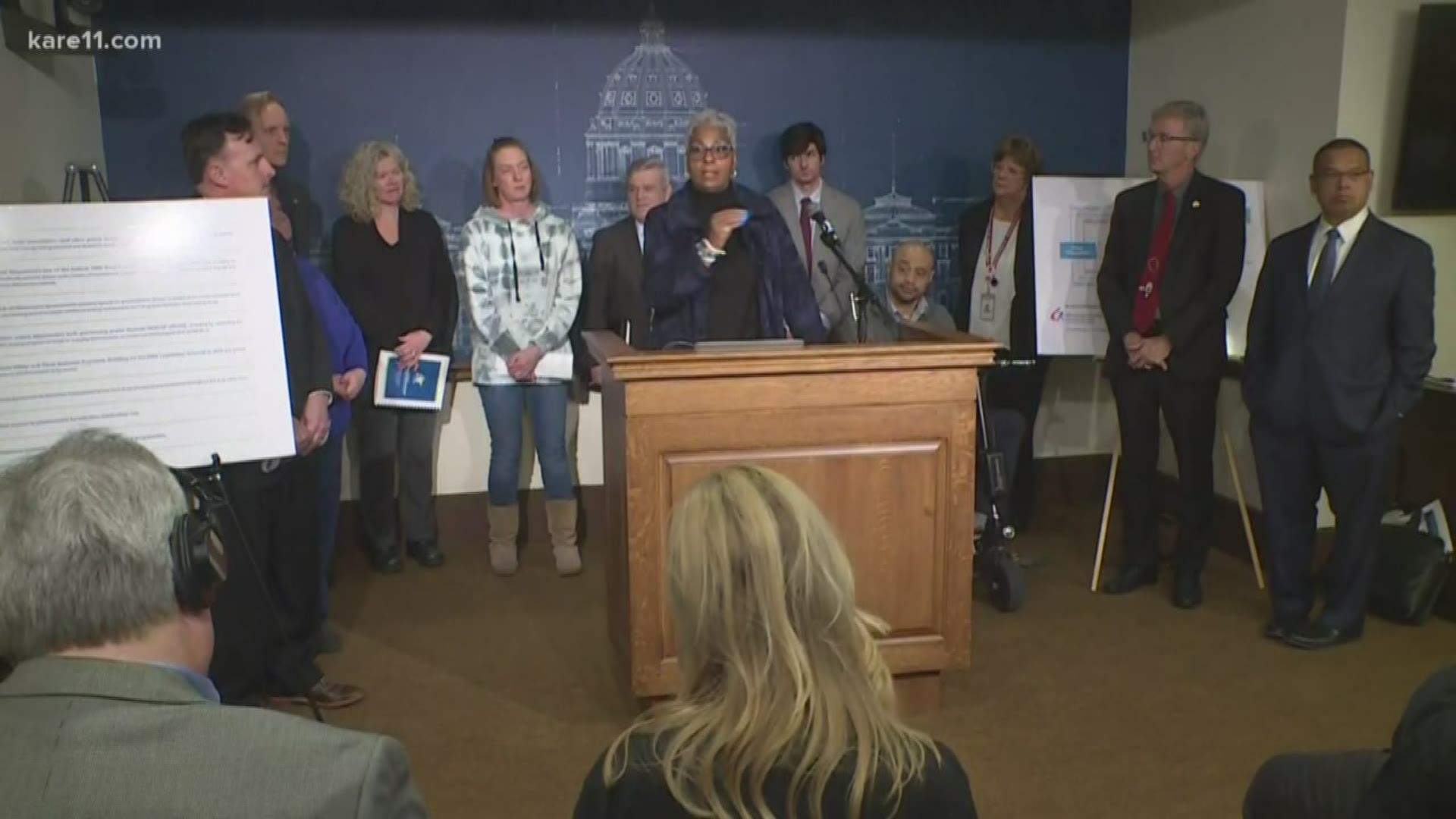ST PAUL, Minn. — A bipartisan task force has laid out 14 options for dealing with skyrocketing prescription drug prices.
But before the members of the task force delve into the solutions, they want the public to better understand the exact nature of the overwhelming problem.
“It is the confusion around why these prices are so high, which is a barrier to lowering them,” said Minnesota Attorney General Keith Ellison about the pricing within a market he described as “opaque and dysfunctional.”
One year ago, Ellison created the task force – that includes lawmakers, medical professionals and patients – to try to better articulate the crisis and potential solutions related to prescription drug costs.
On Wednesday, the task force released the product of their work: a 94-page report that begins by defining the problems, including a lack of market transparency.
“One of the things we find is markets work when there’s transparency. I can’t compare prices as a consumer if I can’t find prices,” said Dr. Stephen Schondelmeyer, a doctor at the University of Minnesota and task force member.
Other critical parts of the problem, according to the task force, include: the abuse of federal patent and exclusivity laws that hinder generic competition, an inability to import cheaper drugs from other countries, the practice of drug companies to make minor changes to their products to extend their patent protection and overall deceptive marketing practices.
“There’s not a single player on here [referring to a chart of market players] that alone caused it, but there’s not a single player on here that isn’t part of the problem and solution as well,” Schondelmeyer said.
The task force offered 14 specific recommendations to deal with the problem, beginning with a “Prescription Drug Accountability Commission” that would allow leaders to ask drug companies the tough questions.
“So that the public can know why a product is $2.1 million or why a product has gone up 5,000% in less than six months,” said Sen. Scott Jensen, R-Chaska, who is also a medical doctor.
Jensen has authored a bill, along with Rep. Kelly Morrison – also a practicing doctor – that would establish the commission. On Wednesday, the House commerce committee advanced the bill; the Senate has yet to schedule a hearing on the measure.
Among the other proposed solutions: importing drugs at “global market rates,” enacting legislation that would penalize price-gouging drug companies and leveraging the buying power of the state government to negotiate lower drug prices.
Task force members expect leaders will consider the report – its findings and proposed solutions – as they consider actions, both legislative and enforcement-related, down the road. After all, they argued on Wednesday, lives are at stake.
“If we don’t drive the prices down, your mother, your sister, someone you love or care about will die, because they simply can’t afford to pay for lifesaving medications,” said Shirlyn LaChapelle, a task force member and founder and director of Nursing is the Answer.
Here is the full report.

